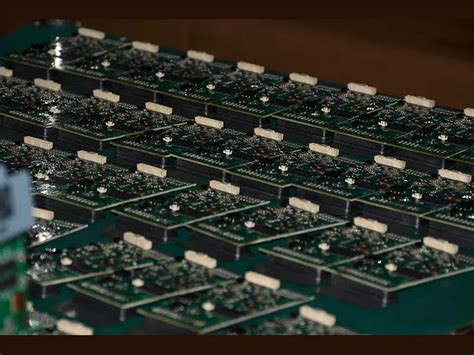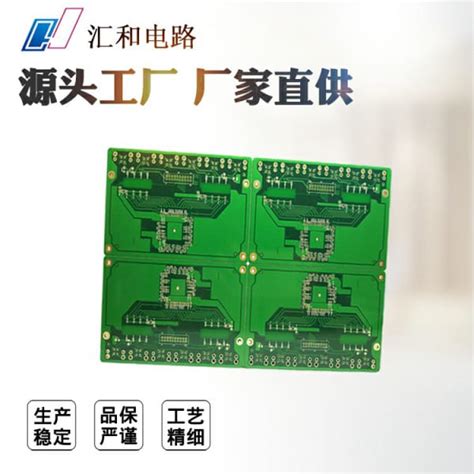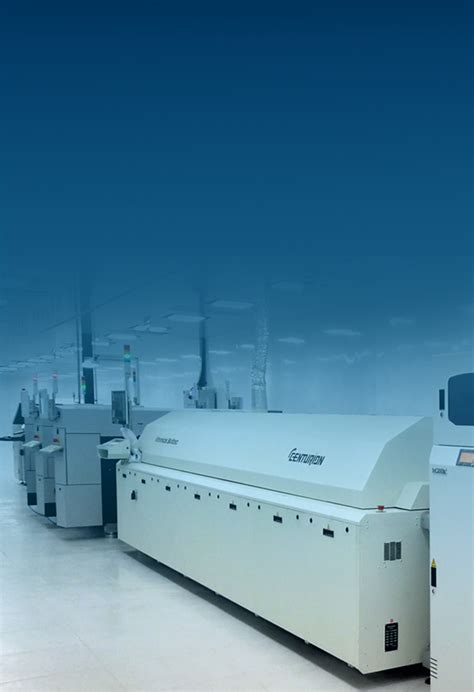Unlocking Innovation: The Power of Turnkey Prototype Assembly
Key Takeaways
In today’s rapidly evolving market, turnkey prototype assembly emerges as a pivotal solution for businesses aiming to bring their innovative ideas to life. By leveraging turnkey solutions, companies can significantly streamline their development processes, ensuring that concepts transition to tangible products with remarkable efficiency. One of the standout advantages of turnkey prototype assembly is its potential for cost reduction; organizations can minimize overhead expenses and avoid the complexities associated with managing disparate aspects of production. Moreover, this approach enhances team collaboration, as diverse groups—ranging from design to manufacturing—can work cohesively under a unified framework. The integration of design and manufacturing expertise not only facilitates improved product quality but also sparks creativity within teams, enabling them to focus on what they do best while relying on specialized providers for the intricacies of construction. Furthermore, industries utilizing this method can realize quicker avenues to market, which is crucial in maintaining competitiveness and satisfying client demands swiftly. As businesses increasingly adopt pcb assembly and pcba, they position themselves favorably for future advancements in innovation, unlocking pathways that could lead to transformative breakthroughs within their respective fields. The convergence of these factors illustrates why embracing turnkey prototype assembly is not just advantageous but essential for sustained success in today’s fast-paced environment.
Understanding Turnkey Prototype Assembly: A Comprehensive Overview
Turnkey prototype assembly is a transformative approach that simplifies the journey from concept to final product. This method allows businesses to leverage specialized providers who manage the complexities of assembly, ensuring that innovative ideas are not only brought to life but done so efficiently. In this context, pcb assembly and pcba play crucial roles by ensuring that electronic components are expertly integrated into prototypes. By utilizing turnkey solutions, companies can streamline their development processes, enabling a quicker transition from prototype to market-ready product. This integration not only minimizes time to market but also reduces costs associated with development. Furthermore, when experts handle the assembly, it alleviates the burden on in-house teams, allowing them to concentrate on creativity and innovation. As a tip for businesses looking to enhance their production efficiency: > “Embracing turnkey assembly can significantly boost your operational efficiency and foster innovation.” By focusing on project management rather than intricate assembly tasks, businesses gain competitive advantages in rapidly evolving markets. Ultimately, understanding and implementing turnkey prototype assembly can create significant opportunities for breakthroughs in product design and development.
The Benefits of Turnkey Solutions in Product Development
The implementation of turnkey solutions in product development brings a wealth of advantages that can significantly impact a company’s ability to innovate. One of the primary benefits is the reduction in time to market. By utilizing specialized providers who offer comprehensive services, organizations can transition from concept to pcb assembly much faster, allowing them to capitalize on market opportunities before competitors. Additionally, companies experience lower costs associated with product development; outsourcing pcba processes reduces overhead and the need for extensive in-house resources. This streamlined approach not only conserves financial resources but also simplifies project management, enabling teams to concentrate on core competencies like design and innovation rather than getting bogged down with intricate assembly logistics. Furthermore, the collaborative nature of turnkey prototype assembly means that various departments can communicate more effectively, sharing insights that enhance overall product quality. As a result, businesses can maintain focus on their strategic goals while fostering a culture of creativity and efficiency that propels their products to success in an increasingly competitive landscape.
Streamlining the Development Process: How Turnkey Assembly Transforms Ideas
Turnkey prototype assembly is revolutionizing the way products move from concept to reality. By leveraging pcb assembly and pcba technologies, businesses can eliminate many of the challenges traditionally associated with product development.
The integration of design and manufacturing expertise brings forth a myriad of benefits, enabling companies to focus on their core competencies while relying on specialized providers to manage the complexities of production. This not only accelerates time to market but also enhances overall efficiency across various project phases.
Here’s a table that outlines the key aspects of turnkey prototype assembly:
| Aspect | Description |
|---|---|
| Time Efficiency | Reduces development time through streamlined processes |
| Cost Effectiveness | Minimizes overhead costs by outsourcing assembly |
| Enhanced Collaboration | Fosters better communication between design and production teams |
| Quality Assurance | Ensures high standards by utilizing experienced professionals |
By adopting a turnkey approach, businesses position themselves to innovate faster and more effectively. This adaptability is crucial in a competitive marketplace, allowing innovative ideas to materialize swiftly while aligning with market demands. Overall, embracing turnkey prototype assembly is more than just a logistical choice; it’s a strategic move toward driving sustained growth and innovation in product development.
Cost Reduction through Turnkey Prototyping: A Financial Perspective
In today’s competitive marketplace, the ability to reduce costs while maintaining quality is crucial for success. Turnkey prototype assembly offers a strategic avenue for achieving such cost efficiencies. By outsourcing the complexities of product development, companies can leverage expertise in pcb assembly and pcba to minimize overhead expenses associated with in-house manufacturing. This approach not only reduces labor costs but also decreases the need for extensive capital investment in production equipment. Furthermore, the streamlined process of turnkey solutions allows businesses to quickly pivot from design to production, thereby reducing time-to-market substantially. Such efficiency translates into cost savings that can be reinvested into research and development, fueling further innovation. Additionally, working with specialized providers enhances economies of scale that can lead to bulk purchasing discounts on materials and components required for pcb assembly, ultimately lowering overall project costs. By embracing turnkey prototyping, organizations not only mitigate financial risks but also enhance their capacity for future growth and advancement in a rapidly evolving industry landscape.
Enhancing Team Collaboration with Turnkey Prototype Assembly
The implementation of turnkey prototype assembly significantly enhances team collaboration by integrating various expertise into a cohesive development framework. When disparate teams, such as design, engineering, and manufacturing, come together under a turnkey solution, they can communicate more effectively and streamline workflows. The adoption of pcb assembly techniques within this framework ensures that technical aspects are managed by specialists who understand the nuances of pcba (printed circuit board assembly). This division of labor allows teams to focus on their core competencies while fostering an environment where ideas can be shared quickly and iteratively. As a result, the traditional silos that often hinder collaboration are diminished, leading to heightened innovation and a more efficient pathway from concept to completion. By embracing these integrated approaches, businesses not only protect their resources but also create a culture that values collaboration and collective problem-solving—key drivers in the forward momentum of product development initiatives.
Design and Manufacturing Integration: The Key to Innovation
The integration of design and manufacturing processes is crucial in the realm of innovation, particularly when it comes to turnkey prototype assembly. This synergy allows for a more cohesive approach where creative ideas are seamlessly transitioned into practical applications. Utilizing pcb assembly techniques within this framework enhances the efficiency of product development, ensuring that the technical specifications align perfectly with the design vision. By leveraging pcba (printed circuit board assembly), businesses can significantly reduce the complexities traditionally associated with prototyping, thus empowering teams to focus on innovation rather than getting bogged down in logistical challenges. Moreover, this integrated approach supports rapid iterations and optimizations, as teams can easily adjust design parameters without facing delays from lengthy manufacturing changes. Embracing this model not only accelerates time to market but also fosters a culture of collaboration and creativity that is essential for sustaining competitive advantages in today’s fast-paced environment. The harmonious collaboration between these two critical functions ultimately sets the stage for groundbreaking advancements, encouraging organizations to push boundaries and realize their visionary concepts into tangible products efficiently.
Real-World Success Stories: Companies Thriving with Turnkey Solutions
The implementation of turnkey prototype assembly has led numerous companies to achieve remarkable success by enhancing their operational efficiency and product quality. For instance, a leading electronics manufacturer integrated pcb assembly services into its workflow, which allowed for a seamless transition from concept to production. By utilizing pcba suppliers that specialize in turnkey solutions, the company significantly reduced its time to market and minimized production costs. This strategic collaboration not only optimized the assembly process but also enabled the firm to focus on innovation and design refinement, crucial for maintaining a competitive edge in the rapidly evolving technology sector. Another notable example includes a startup that embraced turnkey solutions to bring its healthcare device from prototype to reality with incredible speed. By outsourcing complex assembly tasks, they were able to allocate resources toward research and development, which ultimately resulted in a breakthrough product that met critical market needs. These success stories highlight how adopting turnkey prototype assembly can empower organizations to flourish by fostering innovation while simplifying operational complexities.
Future Trends in Prototype Assembly: What’s on the Horizon?
As the landscape of product development continues to evolve, the future of turnkey prototype assembly seems promising, particularly with advancements in pcb assembly and pcba technologies. This sector is expected to witness enhanced automation, allowing for a more agile assembly process that can adapt to varying production scales. The integration of artificial intelligence and machine learning will likely facilitate improved quality control and troubleshooting throughout the assembly stages. Moreover, 3D printing is set to revolutionize how components are produced, enabling rapid iterations of prototypes which align closely with the principles of turnkey solutions. The drive towards sustainability will also shape future practices; organizations may increasingly seek environmentally friendly materials and processes in their prototype assembly lines. As market dynamics change, collaborative tools will foster deeper partnerships between design teams and manufacturing units, reinforcing a culture where innovation can flourish seamlessly. Embracing these trends in turnkey prototype assembly will not only streamline operations but also empower companies to deliver more innovative solutions faster than ever before, marking a significant shift towards a more integrated and forward-thinking development process.
Conclusion
In an ever-evolving marketplace where innovation is paramount, turnkey prototype assembly stands out as a game-changer. By outsourcing the complexities of assembly to experts, businesses can concentrate on their core strengths—creativity and design. The integration of design and manufacturing capabilities allows teams to streamline processes that lead to faster development cycles and ultimately, reduced time to market. This synergy not only minimizes costs but also enhances operational efficiency. Moreover, in the realm of PCB assembly and PCBA, embracing turnkey solutions allows for precise and efficient production, ensuring that every prototype meets stringent quality standards without compromising on speed or flexibility. As companies navigate through the competition, adopting turnkey prototype assembly proves to be essential in transforming innovative concepts into reality while paving the way for future advancements in technology and product development.
FAQs
When considering turnkey prototype assembly, many people have questions about its implications and benefits in the development process. One common inquiry revolves around the effectiveness of these solutions in various stages of product creation, particularly in relation to pcb assembly. The integration of pcba services with turnkey solutions significantly enhances the efficiency of transforming designs into market-ready products. This not only reduces the time taken to launch new innovations but also streamlines communication across design and manufacturing teams. Additionally, clients often seek clarity on how partnering with a specialized assembly provider can alleviate the complexities involved in production and logistics. By outsourcing pcb assembly, businesses can redirect their focus towards harnessing creativity and driving innovation, rather than becoming bogged down by the intricacies of assembling components. It’s evident that embracing turnkey prototype assembly and its associated advantages can propel organizations toward achieving groundbreaking advancements while maintaining a competitive edge in their industries. For those looking to deepen their understanding and explore these solutions further, please click here for more information on optimizing your prototype development efforts through effective pcba strategies.







